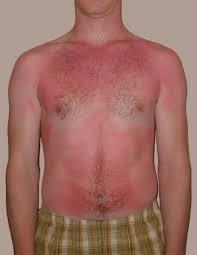Why should we control the UV doses received? Skin and eyes health risks
Prolonged exposure to ultraviolet radiation can cause significant damage to living organisms:
- The painful experience of a sunburn (erythema) is a visible manifestation of a type of defense mechanism set up by the cells of our skin against excessive UV doses.
- The ultraviolet radiation, and particularly the most aggressive (UV-B), can cause significant damage to the human genome, causing irreversible changes in the gene sequences of our DNA.
Fortunately, in most cases, the organisms are able to overcome these attacks with natural self-correcting mechanisms to control the risks associated with such an exposure. For instance, most of us are able to tan.
However, at higher doses, the human species can:
- develop certain photo-allergies
- undergo accelerated aging of the skin
- suffer from eye cataracts
- develop certain types of skin cancer such as melanoma
Health risks of UV exposure for each human being is not equal
In conclusion, the risks incurred by people who expose themselves to UV, voluntarily or not, are mainly related to:
- type of ultraviolet light absorbed (the intensity of it)
- dose received
- frequency of exposure
- age at which one is exposed (mature skin or not)
Thus, the risks of UV exposure is not the same for each human being. It is a function of skin type or phototype (more or less dark) and there are four different skin types that determine the type of sunscreen you need to apply in each case.
Similarly, plants are also very sensitive to the UV dose absorbed as growth yields slow down with abnormal exposure to UV rays.


